The book of Exodus continues the historical narrative of Genesis. It begins with the dramatic exit of the Israelites from Egypt under the leadership of Moses. Many Egyptologists challenge the historicity of the exodus story. As a result, archaeologists debating the origins of the Israelites seldom consider the explanation presented in the Bible. In his 2006 research project,1 Dr. Douglas Petrovich works from the assumption that the exodus occurred just as described in the Bible. He seeks to determine the pharaoh of the exodus based on chronological and biographical requirements.
Unlike later Egyptian pharaohs, the pharaoh of the exodus remains unnamed in the Bible. The likely reason for this is that Moses followed the standard Egyptian practice at that time. This meant referring to enemy kings by their titles only, while purposefully leaving them unnamed. Just who was the pharaoh of the exodus?
The following is a summary of Amenhotep II and the Historicity of the Exodus-Pharaoh by Douglas Petrovich, and of the surrounding discussion and research pertaining to it. The views expressed do not necessarily reflect those of New Creation.
The Date of the Exodus
There are two prominent views for the date of the exodus. The late date view places the event in the 13th century BC under Pharaoh Ramses II. In contrast, the early date view places it in the 15th century BC under Amenhotep II.
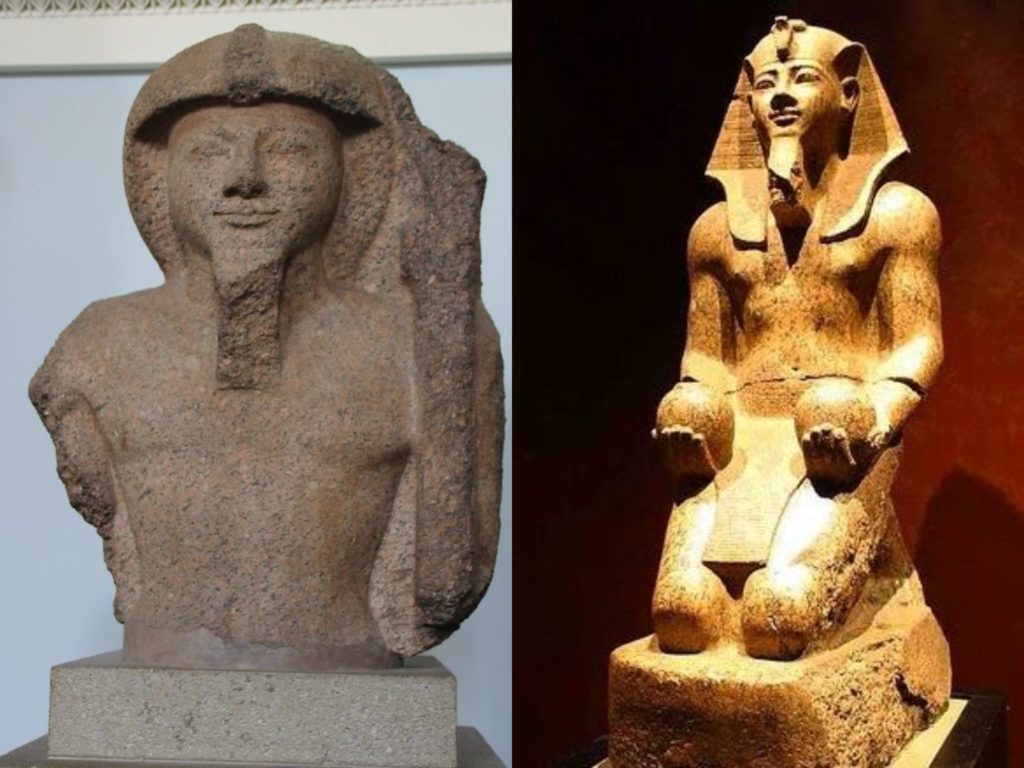
1 Kings 6:1 is a key verse in establishing the Biblical date for the exodus. It states that Solomon began the construction of the Jerusalem temple in the 480th year after the exodus. This means that 479+ completed years had passed. There is widespread agreement that Solomon’s construction of the temple began either 967 or 966 BC. These figures result in an exodus date of either 1446 or 1445 BC, which corresponds to the early-date view.
The Jubilee cycles present another line of evidence for the early-date view. Leviticus 25:2–10 states that every 50th year was to be a Jubilee year for the Israelites. The Jubilee cycles were to begin when the Israelites entered the promised land. Since they wandered in the wilderness for 40 years, they probably entered the promised land in 1406 or 1405 BC. The Talmud records the dates of later Jubilee cycles. Calculating backward results in a date of 1406 BC for the beginning of the first cycle.
Those who hold the late date view interpret Solomon’s 480th year figuratively. They justify this interpretation based on archaeological evidence from the 13th century BC that seems to correspond with the biblical record. Additionally, Raamses, a city built by the Israelites according to Exodus 1:11, is thought to be Pi-Ramesses, which flourished from 1270–1100 BC.
There are some problems with this latter view, however. The author of 1 Kings used a highly specific ordinal number (480th) rather than a cardinal number (480). Because of this, it seems unlikely that he meant the number figuratively.
There are also problems with the late-date view’s choice of pharaoh, Ramses II. Moses was exiled in Midian for 40 years until the pharaoh who sought him was dead. This indicates that the pre-exodus pharaoh had a long reign. Seti I, who preceded Ramses III, only reigned for approximately 15 years. By contrast, Thutmose III, the pre-exodus pharaoh of the early-date view, reigned for nearly 54 years. More compelling, he was the only pharaoh from either period to reign for over 40 years.
Egyptian Chronology
To confirm Amenhotep II’s candidacy for the exodus pharaoh, the date of the exodus must be synchronized with Egyptian history. The Ebers Papyrus helps with this. It records astronomical data from a specific day in the reign of Amenhotep I. Astronomers can chart star positions throughout history. Therefore, this astronomical data, along with records of the lengths of each pharaoh’s reign, provides a date that can then help determine the pharaoh reigning in 1446 BC. Based on these calculations, Amenhotep II reigned from 1455–1418 BC, spanning the biblical date of the exodus.2
The Death of the Firstborn
Since Exodus 12:29–32 indicates that the pharaoh survived the 10th plague, he must not have been a firstborn son. Amenhotep II was not the firstborn son of Thutmose III. He had an older brother named Amenemhat, who apparently died before he could assume the throne. Therefore, Amenhotep II fits this qualification for the exodus pharaoh.
Additionally, the exodus pharaoh’s firstborn died in the 10th plague. Therefore, the following pharaoh must not have been a firstborn, either. Thutmose IV succeeded Amenhotep II to the throne. According to an inscription between the paws of the Great Sphinx, the Dream Stele, Thutmose IV usurped the throne from his older brother. Also named Amenhotep, there are no records referring to this older brother, the heir apparent, as Amenhotep II’s eldest son.
Traditionally, Amenhotep II’s eldest son should have been named Thutmose. A wall painting at Thebes displays a young Thutmose, likely Amenhotep II’s eldest son. Thutmose must have died in childhood since there are no later records of him. This would have made his younger brother, Amenhotep, the heir apparent. But later, an even younger brother, Thutmose IV, usurped the throne from him. If Amenhotep II was indeed the pharaoh of the exodus, then his eldest son, Thutmose, died in the 10th plague.
The Red Sea Crossing
It typically has been assumed that the exodus pharaoh perished in the Red Sea along with his army. If this is true, it presents a problem for Amenhotep II as a candidate for the exodus pharaoh. He continued to rule for at least 17 years after the exodus. Exodus 14 records the Red Sea crossing, but it does not specify that pharaoh died.
Psalm 106:11 also refers to the incident. It states that not one of the Israelites’ enemies was left. This may refer only to pharaoh’s army pursuing the Israelites in the Red Sea. It never specifically mentions pharaoh. Psalm 136:15 states that God overthrew pharaoh and his army in the Red Sea. However, the verb used literally means “he shook off,” which does not explicitly imply the death of pharaoh. It is therefore possible that the pharaoh of the exodus did not perish in the Red Sea. As such, this may not exclude Amenhotep II from being the exodus pharaoh.
Although there is no direct evidence of the length of Amenhotep II’s reign, it must have been at least 26 years. An inscribed wine juglet found commemorates year 26 of his reign. It is possible, however, that he reigned for at least 30 or 35 years. A fragmentary inscription appears to mark either his 30th or 35th regnal year. Furthermore, Amenhotep II celebrated a sed festival, which traditionally celebrated a pharaoh’s 30th regnal year. Petrovich tentatively suggests that Amenhotep II reigned 37 1/3 years in total. Of these years, the first 2 1/3 consisted of a co-regency with his father. Records show that Amenhotep II began his reign at 18 years of age. Therefore, he must have died at the age of 55.
Egyptian Military Campaigns
Amenhotep II’s father, Thutmose III, was renowned for his military prowess and led 17 military campaigns into the Levant. By contrast, Amenhotep II led only two or three. Early in his career, Amenhotep II sought widespread fame and glory. It seems therefore odd that he conducted so few campaigns. This sharp decline seems to indicate a lessening of Egyptian power. Perhaps this was due to the loss of their slave base and military.
Amenhotep II’s first military campaign occurred after the death of his father, Thutmose III. The purpose of this campaign would be to establish his authority as the new pharaoh and quell rebellions that arose in the wake of his father’s death.
Amenhotep II’s final military campaign appears to have occurred in 1446 BC, the biblical date for the exodus. The campaign occurred in November, a non-typical time of year for a military campaign. This suggests that it was planned on short notice. Additionally, this campaign was much shorter than the previous one. This signifies this campaign was not intended to expand the borders of Egypt’s area of control.
Furthermore, following this campaign, a drastic change occurred in foreign policy. It appears that Amenhotep II signed a peace treaty with Mitanni, one of Egypt’s long-time enemies. This change in foreign policy could be due to Egypt’s weakened state after the loss of its military in the Red Sea.
Amenhotep II’s Loot List
The first census of the Israelites recorded in Numbers 1:45–46 suggests a total population of over 2,000,000 people. A loss of this magnitude must have devastated the Egyptian economy. It is not surprising that Egyptian records would not include this event. Foreign slaves were below the notice of their scribes. Additionally, the pride of the Egyptians would have prevented them from retaining a record of such a humiliating defeat at the hands of their slaves.
Yet, the loot lists from Amenhotep II’s final campaign may hint at this loss sustained by the Egyptians. The plunder included 101,128 slaves, 1,082 chariots, and 13,500 weapons. This is significantly more than on any of his or his father’s previous campaigns.
Among the slaves listed on the loot list of Amenhotep II’s final campaign were 3,600 Habiru people. Some scholars have equated the Habiru people with the Israelites due to its similarity to the word Hebrew. If the Habiru (also called Apiru) mentioned on the booty lists were Israelites, then the biblical record omitted their capture.
Amenhotep II’s final military campaign falls between the end of Exodus and the beginning of Numbers. This is a silent period in biblical history. It is possible a band of Israelites abandoned Moses’s leadership and attempted to make their own way either to the Promised Land or back to Egypt. These may have been the Apiru captured by Amenhotep II, if they were indeed Hebrews.
The Daughter of Pharaoh
A possible piece of evidence in favor of Amenhotep II lies in the desecration of Hatshepsut’s image. Hatshepsut was the daughter of Thutmose I, the wife of Thutmose II. After the death of Thutmose II, Hatshepsut appointed herself as co-regent with Thutmose III. Moses would have been born during the reign of Thutmose I. In such case, the daughter of pharaoh who drew Moses out of the river may have been Hatshepsut.

http://www.metmuseum.org/art/collection/search/544450
Multiple theories exist concerning Hatshepsut’s age. If she was born after the coronation of Thutmose I, she would have been only three years old when Moses was born, and therefore not old enough to adopt a child. However, no evidence has surfaced indicating that she was born this late. Her father was at least 35 years old when he became pharaoh. Therefore, it is quite plausible that she could have been a teenager or young adult by Moses’ birth. Hatshepsut’s sister, Akhbetneferu, died in infancy. Hatshepsut therefore remains the only candidate for the daughter of pharaoh during the time of Moses’s infancy.
At some point after the death of Hatshepsut, someone systematically defaced her images in an attempt to erase all memory of her. In Egyptian thought, a spirit could only live as long as that person was remembered on earth. An assault on her memory was an assault on her spirit in the afterlife. Most Egyptologists place the blame on Thutmose III, portraying him as jealous of her co-regency with him. Yet the defacement occurred at least 30 years after Hatshepsut’s death, a long time to wait to exact revenge. If he hated her enough to attempt to kill her spirit, there is no apparent reason that he would wait 30 years to do it.
Amenhotep II is a second possible candidate for the defacer of Hatshepsut’s images. Some scholars have suggested that Thutmose III began the defacement campaign and Amenhotep II completed it. They do not explain, however, what grudge Amenhotep II would have held against Hatshepsut. If Amenhotep II was solely responsible for the defacement of Hatshepsut’s images, then a plausible reason exists. If Hatshepsut was the adoptive mother of Moses, who humiliated Amenhotep II, facilitated the death of his firstborn son, took his labor force, and destroyed his military, then Amenhotep II would have ample reason to despise her.
Conclusion
The goal of Petrovich’s article was to synchronize Israelite and Egyptian history and to examine the life of Amenhotep II, the Egyptian pharaoh whose regnal years fit the time of the Israelite exodus from Egypt, to determine whether he met the qualifications for the pharaoh of the exodus.
Amenhotep II’s life was not cut short at the time of the Red Sea event, but a careful reading of the relevant passages reveals that the pharaoh of the exodus did not necessarily die in the Red Sea. Amenhotep II’s final military campaign correlates well with the exodus account as an attempt to rebuild his slave base as well as recoup his lost chariots and weapons. He also may have captured a detached group of Israelites, listed as Habiru on his booty lists. Finally, the obliteration of Hatshepsut’s images no less than 30 years after her death makes the most logical sense if she was the daughter of pharaoh who raised Moses.
The pieces of evidence work together to demonstrate that not only is Amenhotep II the only legitimate candidate for the pharaoh of the exodus, but that the biblical chronology of the era synchronizes perfectly with Egyptian history, placing —Dr. Petrovich believes— the exodus in 1446 BC, during Amenhotep II’s reign.
- Petrovich, Douglas N. (2006). Amenhotep II and the Historicity of the Exodus-Pharaoh. The Master’s Seminary Journal, 17:1, 1–30. ↩︎
- Since the writing of his 2006 article, Petrovich has recalculated these dates and now suggests that Amenhotep II reigned from 1453–1416 BC. These dates still span the biblical date for the Exodus. ↩︎

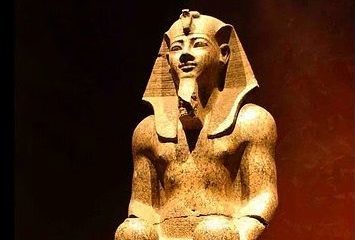
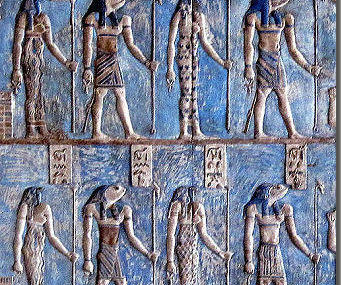
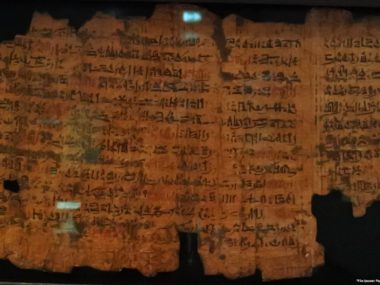

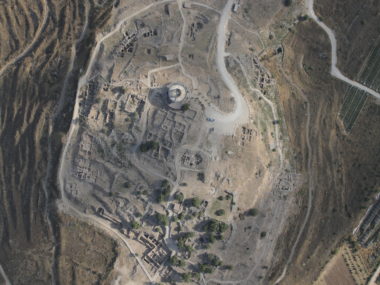

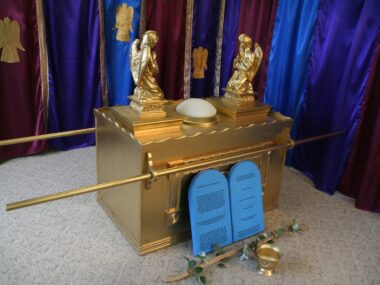




This is a relatively strong case for Amenhotep II being the exodus pharaoh. However, I still believe the pharaoh of the exodus was not Amenhotep II but his grandfather, Thutmose II father of Thutmose III and husband of Hatshepsut. There was a known decline and crisis in faith of the Egyptian deity Ra after thutmose ii’s reign which is consistent with God’s attacks on each egyptian deity. Thutmose II was also the only pharaoh’s whose body was found to have cysts on it which would fit with the boil plague from the Bible. Hatshepsut and Thutmose III also had some cysts on their bodies. Hatshepsut in inscriptions, noted that a new asiatic population emerged from thexpe hyksos and overthrew that which had been made. That new population would be the Hebrews whom the Egyptians would consider responsible for ruining their country. Also, Thut II conducted a campaign in the sinai against shasu and Egyptian armies could not leave egypt for 22 more years which would make sense based on the Bible’s indication that the army drowned in the red sea. There are more evidence for Thut II but I will leave it at this for now. If Thutmose II was the pharaoh of the exodus, then the original oppressor of Israel would likely be Ahmose I, founder of the 18th dynasty and the Pharaoh from whom Moses fled would be either Amenhotep I or Thutmose I.
Hi Ed,
For more information on this topic, look for Dr. Petrovich’s forthcoming book, Origins of the Hebrews.
Are you forgetting 1 Kings 6:1 ? Where is your 480 years ?
Abigal,
Dr. Petrovich totally neglects to consider Paul’s accounting in Acts 13:18-22:
18 And about the time of forty (40) years suffered he (Moses) their manners in the wilderness.
19 And when he had destroyed seven nations in the land of Canaan, he divided their land to them by lot (12 years).
20 And after that he gave unto them judges about the space of four hundred and fifty (450) years, until Samuel the prophet.
21 And afterward they desired a king: and God gave unto them Saul the son of Cis, a man of the tribe of Benjamin, by the space of forty (40) years.
22 And when he had removed him, he raised up unto them David to be their king.”
These add up from the completion of Solomons temple in 958 BC to 1552 BC for the Exodus (594 years total). Additionally, Judges 11:26 confirms that from the settlement of Palestine to the start of Jephthah’s term was exactly 300 years (1200 + 300 =1500 B.C.) confirming the accuracy of the judge’s chronology (see figure 3-1). In my book, Ancient History Refined, I show overwhelming support for this timeline from both Historians and Archeology. The Patterns of Evidence found for every benchmark event is the proof of concept of this timeline.
Here is an excerpt from my book Ancient History Refined.
The accuracy of the WBT timeline post 1800 B.C. is prodigiously confirmed with the pattern of historical events and C-14 dating adjusted in accordance with creationists Barns and Humphreys theory (the B&H theory) (Table I-1). The period of the judges calculates to close to 450 years, confirming Paul’s estimate of about 450 years. The exodus of the Israelites from Egypt in 1552 B.C. is corroborated by Paul, Josephus, and Manetho (Noted Historian’s estimates: Manetho (quoted by Josephus), 592 years (3rd Cen. BC); Josephus, 592 years (1st Cen. AD); Melchior Canus, 590 years (16th Cen. AD); Codomanus, 598 (16th Cen. AD); Maestlinus, 592 (16th– 17th Cen. AD);). The archaeology typology dates and average actual C-14 dates matching the estimated inflated C-14 dates align perfectly with the fall of Jericho conflagration date (1512), the Exodus (1552), and the entry of Israel into Egypt (1777). The dates held to by Manfred Bietak for the start and end of the Semitic occupation of Avaris (1783-1550) are perfectly matched with this biblical timeline (1777-1552). The end dates for the 13th and 14th Egyptian Dynasties (the 14th Dynasty being the sematic Taskmasters over the Hebrew slaves), as well as the start of the Hyksos (Amalekite) invasion (all three in about 1550 B.C.), perfectly align with the biblical timeline as verified by the C-14 three-step dating method. The descriptions for the pharaoh of the Exodus (Merneferre Ay), the death of the firstborn of Egypt, the pharaoh of Joseph when appointed to treasurer of Egypt (Senusret II), the pharaoh of the entry of Israel into Egypt (Senusret III), the identity of Joseph as Senankh (treasurer under Senusret III), the identity of the pharaoh at the birth of Moses (Sekhemresewadjtawy Sobekhotep III) and his daughter (Moses’s Egyptian mother, Iuhetibu Fendy) all describe the course of events in their time congruent with the records found in the Bible.
Please read my book and see the overwhelming patterns of evidence:
https://www.amazon.com/Ancient-History-Refined-Jeff-Walling/dp/1664210717?fbclid=IwAR261d9md41pNeIp3kxT3Ea3SjAQ-ep3jtqGy3fWqvzliscyc_bFFLWmRXk Please email me at [email protected] to discuss.
What do you make of the underwater discovery of the gold-lined four-spoked royal chariot wheel among all the coral remnants of regular six-spoked chariot wheels and axles in the Gulf of Aqaba, the eastern ear of the Red Sea?
Hi Lewis,
Fascinating stories have emerged of the discovery of chariot wheels in the Gulf of Aqaba. Unfortunately, they appear to be false. Ron Wyatt claimed to have found four, six, and eight-spoked chariot wheels preserved in coral, as well as the gold wheel that you mentioned. However, Wyatt had no archaeological training and was never licensed to conduct an archaeological project. Although he claimed to have found many wonderful things including Noah’s ark and the Ark of the Covenant, he was never able to back up his claims. One researcher who analyzed the supposed chariot wheels said that the chariot-wheel shaped coral is a common formation in the region, and that the the supposed gold chariot wheel was trim from a modern boat.
Sounds like something someone made up. Even so it’s not the evidence you think it is. If it were real, it would prove at best that a chariot fell off a ship.
95% of your article is nothing more than assumptions, based on opinions. Your no archeologist. Your a themed gossip columnist. And you had the nerve to attack Ron Wyatt, an ACTUAL ARCHEOLOGIST who ACTUALLY discovered things relevant in his work, unlike you?
Ron Wyatt may not have paid money to receive a certificate from a liberal college, but make no mistake, hes more of an archeologist than you’ll ever be. Now. . .back to your gossip columns based on your carefully concocted ASSUMPTIONS, that you derive from carefully calculated OPINIONS. But yeah, your an archeologist alright. Screw those Ton Wyatts who have had worldwide success and fame, because they didnt go the route you did, to pay for their certificate the official way.
Heres a fact for you. When you are on your death bed, add up you and your 100 closest co-workers accomplishments, and they still cannot hold a candle to what Ron Wyatt was able to accomplish in YOUR FIELD.
The fact is, Ron Wyatt exposed you archeologist for what you truely are, frauds and self annointed story tellers. He did the real work, while you millenials were sitting on facebook typing up articles in Hope’s to get acouple likes.
Why are you so hateful ? Abagail has been very polite and professional towards everyone. I too agree with her opinon on Mr. Wyatt. Even before I knew much of him I sensed something was not right. She has simply reported the truth. She has earned her position through hard studies and devotion of the truth. I am so glad she has this blog so we can learn from others.
My view is that Thutmose iii is the Pharaoh of the exodus simply because the dates coincides with his time of rule is Egypt. The biggest mistake I believe is the use of the solar or Gregorian calendar in interpreting the old testament and working out the dating of the exodus. Whereas we know that the ancient Hebrew used lunar calendar. The Gregorian calendar was only used later to align with the times that Romans rules the holy land.
So if we interpret 1 Kings 6:1 based on the lunar calendar you get a totally different picture of when this all happened and how it coincides with conventional Egyptian history.
Using the lunar calendar, which is 11 days shorter than the solar calender, 480 lunar years is equal to 5,280 days or 14.5years. If you add to 966 then you’ll arrive at 1,430BC which is close to the accepted date of death of Thutmose iii of 1425. Ironically, even though he is very renowned and known as the Napoleon of Egypt, nobody knows his cause of death and he died relatively young at the age of 56. He is also succeeded by Amenhotep ii who is his second son. His first born died early which seems to coincide with the old testament account.
this is a mind blowing redaction.
What if the text is corrupt in 1 Kings 6:1?
Hi Bob,
That is definitely worth considering. The Masoretic text provides the standard 480th year, and the Latin Vulgate and the Leningrad codex do as well. The Septuagint suggests that it was the 440th year. Since this text does not appear in any of the known Dead Sea scrolls, we cannot use them to weigh in on the argument. While I think that in a few instances the Septuagint preserves the original text, typically the Masoretic text is more reliable. So, in this instance, I would go with “480th year” unless and until another ancient text comes to light supporting the Septuagint version. For a detailed analysis of this issue, see this article: https://www.academia.edu/5987760/Resolution_of_1_Kings_6_1_Textual_Variant
1 Kings 6:1 is not corrupt. It is a cipher……..which those who read the bible on the surface will not understand. One just must recognize the key and then it opens up the meaning of why it is 480th instead of 480.
It is a shame that most historians and especially archaeologists don’t seem to really want to face truth. So I will tell you what the cipher is. Remember their are many ciphers in Scripture. Jesus himself talked in parables so that those with eyes to see and ears to hear would see truth. Most make the mistake of either rejecting this verse as corrupt or accept the 480 as the number between the Exodus and the 4th year of Solomon but both are incorrect. The cipher is the coming out of Egypt in other words freedom. They were free to take Passover for 480 years……480 years of independence. But they also were taken captive during this period of time. 134 years to be exact as there were 2 philistine captivities……..so the number between the Exodus and 4th year of Solomon is 614 because the captivity years were not counted in the 480 number. That is only one reason Chronologists are way off on the Exodus because it occurred in 1632 BC. Do with this what you will but I assume like most you will probably reject truth. God Bless
Hi Doug,
That is an interesting theory. However, it seems to take something that is quite straightforward and make it unnecessarily complex.
According to the Jewish Midrash Pharoah did not die in the Red Sea, but rather eventually fled to Ninveh.
Hi Joshua,
Thanks for you comment. I was not aware of this reference in the Madrash, and I appreciate you mentioning it.
What & where is the documentation that ALL the – including the animals – firstborn of Egypt, excluding the Hebrews (or Habiru), perished immediately preceeding “Exodus?” You would you think such an extraordinary event would be prominently memorialized. Absent the “Passover” event, Judaism, Christianity & Islam are drivel.
Hi William, You are correct that the Passover event is a key component of biblical theology. The events that you refer to are indeed prominently memorialized in various ancient Israelite texts, which have since been compiled into the Bible. There would have been no reason for the Egyptians to record these events, since they demonstrate weakness and defeat on the part of the Egyptians. Remember, history is written by the victors.
William,I invite you to look at the evidences which Professor Douglas Petrovich has compiled by recent archeology digs. Namely , the mass numbers of first born animals around the palatial grounds of Amenhotep 2. All buried where they fell. The evidence he has compiled is astonishing and amazing. There is no doubt that it happened just as the Bible said. But investigate this yourself for seeing may be believing for you. For me , I need no PROOF. He said it I believe it.
Thanks for this interesting discussion. I hold with Velikovsky that the Pharaoh of the Exodus was in the 13th Dynasty. I believe he was Sobekhotep III (IV) Khaneferre who reigned from 1361 -1350. that Amememhet III of the 12th dynasty was Moses and his foster mother was Sobeknefru (r.1388-1384) and that Moses was also in the 13th dynasty known as Dudimose. Amenemhet IV was Moses’ son by his Ethiopian wife. i believe Hatshepsut was in the days of King Solomon not Moses.
my timeline, created in 1995, places the exodus in 1421. bravo.
This time you got it right — Amenhotep the II was the true pharaoh of the Exodus. Yes – Hatshepsut was the adoptive mother of Moses. Reincarnation is a wonderous thing — sometimes we remember. The concubine and Mother of Moses was named Isis? Isis is equated with Ashtoreth, both names for the consort of Yahweh the free, pronounced as YaWee, not the God of Wrath known as Yahweh, pronounced YaWay, aka Jehovah. We learn something new every day.